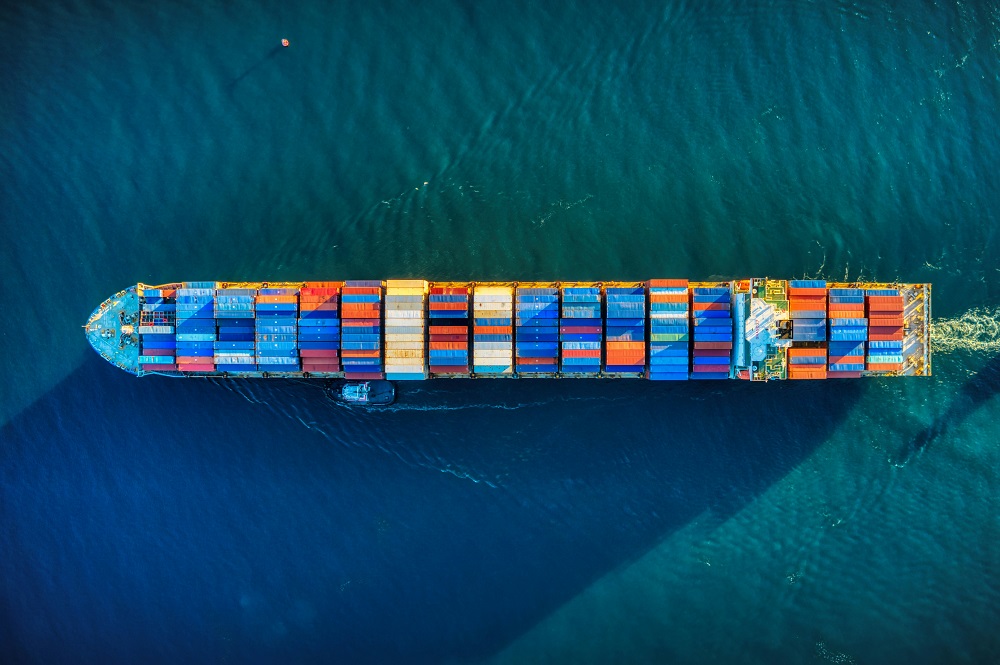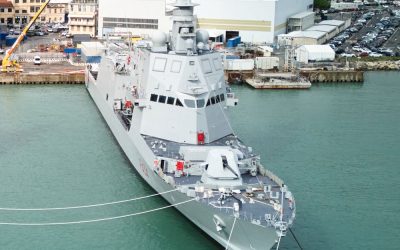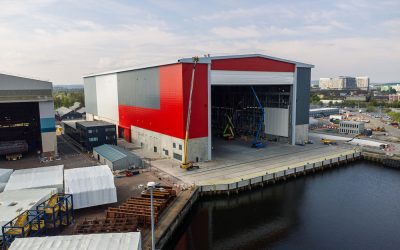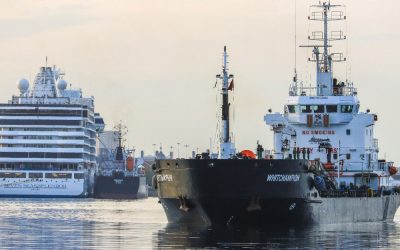Project FuTube brings together Finnish company’s latest technology to advance ship propulsion
In the world of maritime technology, efficiency is usually a key driver of innovation. Drive shaft problems on vessels are a significant cause of ship delays and many companies have sought to tackle this issue in the past. Finnish engineering company Wärtsilä has recently put itself forward as the latest to do so with the recent unveiling of Project FuTube. This ambitious endeavour marks a milestone in the evolution of shaft line repairs and maintenance, with the company hoping to revolutionise marine propulsion systems and redefine industry standards.
According to research from the company, the number of vessels that break down due to shaft misalignment is around 200 per year. The new solution is designed to prevent misalignment and can help the vessel’s crew detect and react to any issues in real time. The project’s monitoring system can be installed as a complete package, or as individual components.
Rooted in years of expertise and technological advancements from Wärtsilä’s Shaft Line Solutions’ (SLS) team (formerly Wärtsilä Seals and Bearings), the company has launched the project to provide a comprehensive suite of products to customers looking to deal with shaft line issues on vessels. According to the company, this represents the culmination of years of innovation aimed at enhancing operational efficiency, reliability, and safety in vessel drive shaft operations. At its core, the Project FuTube encompasses a suite of cutting-edge solutions, with two key components taking centre stage: the EvoTube System and the IntelliSafe Bearing.
EvoTube aims to offer a shift in shaft line technology with a compact design and versatility for both oil and water lube systems. The bearing also boasts a low-risk profile and simplified system architecture which promises improved reliability and performance for vessel operators by freeing up space on board for other systems or cargo.
Learning from history
Meanwhile, Wärtsilä SLS hopes IntelliSafe, which incorporates lessons learnt from time spent dealing with shaft line issues, will herald a new era of self-regulating bearings, designed to optimise performance and operating conditions. “The monitoring system that we have developed is based on systems we have been using for at least 20 years. We have a lot of data, a lot of history, and a lot of, let’s say backlogs to go on. So we know how to handle this data and how to analyse it to come to our conclusions and findings,” says Jens Hyrup, manager of Alignment Services at Wärtsilä Shaft Line Solutions.
Equipped with embedded sensors, IntelliSafe can swiftly detect and respond to a range of issues, including misalignment and lubrication deficiencies, enabling real-time problem detection and resolution. “We can also monitor the bearing wear all year round, to see if the bearing is wearing down over time. This way we can give a prediction of the lifetime of the bearing,” says Hyrup.
Using this method the company aims to significantly extend the lifecycles of bearings and offering substantial cost savings to customers.
Speaking on the innovative features of these products, Jose Antonio Vázquez, technical manager at Wärtsilä Iberica Porriño, highlights the sophisticated monitoring capabilities of IntelliSafe. “The first step was to introduce a new sensor to monitor the system. We created sensors that can detect the position of the shaft at any moment and can tell us what the oil level is. We know depending on which product is being used whether the system needs to lubricate or not. The sensors make a very large number of measurements per second and with this we can estimate different factors,” he says.
The comprehensive suite of equipment that Project FuTube incorporates has been engineered to track shaft line vibrations, position changes, and various operational metrics with precision. These sensors, strategically positioned along the shaft line, enable the continuous monitoring of the system and ensure prompt detection and resolution of problems. By harnessing the power of simultaneous data sampling coming from the system Wärtsilä SLS believes it will provide a holistic view of the shaft line’s performance in real time, mitigating the risk of phase shifting and enabling swift, informed decision-making.
“The real-time monitoring means that every second we get a picture from the system we can analyse,” Vázquez elaborates, underscoring the system’s responsiveness and precision.
The data from the monitoring system is not connected to the cloud for cybersecurity reasons but can be shared with the company for analysis which can provide additional support via its customer support teams. Furthermore, the data collected by these sensors undergoes rigorous analysis and is stored in dedicated databases for further examination and reporting. Leveraging advanced algorithms, the system identifies trends and enables analysis of the root causes of issues in the system, which allows customers to proactively address potential issues before they escalate with the help of the Wärtsilä SLS team.
Adaptability
One of the system’s distinguishing features is its adaptability, which is designed to cater to both newbuild vessels and retrofit seamlessly. The EvoTube’s lubrication system is entirely automated system meaning that it can switch between different modes or return to a so-called ‘neutral’ setting depending on factors such as the speed of the vessel and the alignment of the shaft line.
Central to the shaft line monitoring system’s efficacy is its user-friendly interface, providing operators with intuitive access to critical data and insights. Designed to be housed within a dedicated cabinet in the engine room or bridge, the interface can equally be attached to a portable smart pad. This allows the crew to promptly to alarms or anomalies. Furthermore, the system also features a data processing unit equipped with state-of-the-art cybersecurity measures to safeguards against unauthorised access.
While the monitoring system offers a comprehensive suite of features out of the box, its modular design allows for further customisation to accommodate specific needs and preferences. From additional sensors to enhanced analytics capabilities, customers have the option to augment the system according to evolving requirements, thereby future proofing their investments and maximising value.
In terms of installation, the system is versatile, with options available for both new builds and retrofits, however the company recommends is targeting the former as a priority. Wärtsilä SLS also aims to deal with the customer directly and will liaise with them about what they want. “We’d prefer to sell it as a complete package, but sometimes the builder or owner will want to reduce costs. So our recommendation would be to have all the sensors installed during the build phase because then you don’t need to dismantle anything to connect the sensors. Then they can decide if they want to have everything included into the system, or if they want to have it as any optional features. We have cases where all the sensors have been installed and the shipyard don’t want to have any responsibility for the monitoring system itself. In that case everything is then prepared by us and during the handover of the newbuild to the customer we complete the installation,” says Hyrup.
Vázquez reveals the operational challenges faced by vessel crews and operators, highlighting the need for transparent, user-friendly solutions. “The crews and the operators, they’re all under heavy pressure. They’re forced to make their vessel’s equipment work outside of its usual parameters but they’re not really aware of what the consequences will be because they’re not experts. They know how to operate the vessel but this kind of bearing care is important, and that should be transparent for them,” he remarks.
Ease of use
Wärtsilä’s Project FuTube represents a stride towards addressing one of the longstanding challenges in vessel operations. Nonetheless, potential customers may ask questions regarding its real-world efficacy. The system’s reliance on sophisticated technology could introduce complexities and operational challenges for vessel crews and operators, especially those unfamiliar with such advanced systems. However, Vázquez asserts that the automated nature of the system will allow for ease of use.
“Our system will help by creating an additional oil field that make a strong separation between the bearing metal and the shaft. The additional oil will produce this separation and will deal with the permanent situation of continuous misalignment. If the system cannot correct this, it will arise an alarm,” he says.
Moreover, concerns about cybersecurity and data privacy may arise, considering that the monitoring system’s data is not connected to the cloud for security reasons but can be shared with the company for analysis. This raises questions about data integrity, privacy safeguards, and the potential implications of data misuse or unauthorised access. But Jens Hyrup addresses this arguing that the shaft line monitoring system is separate from the cloud and data is only transferred when the vessel arrives in port. “The shaft line monitoring has its own controller which acts independently. We will just be monitoring the data, the overall performance and the changes in the system,” he says.
The modular design of Project FuTube represents a key step towards transforming marine propulsion systems. However, its true impact and long-term viability hinge on ensuring seamless integration, and prioritising user experience and data security. As the maritime industry embraces technological advancements, critical evaluation and collaborative efforts will be essential to harness the full potential of innovations like this.






